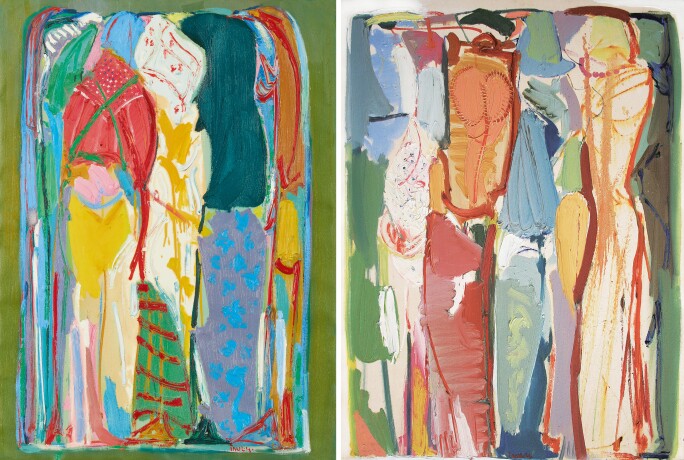Paul Guiragossian was born in Jerusalem in 1925 to an Armenian family and spent his early adult years in Lebanon. Exile and solitude deeply marked his childhood, raised in boarding schools while his parents worked to ensure their sons’ education. Early on in his life, Guiragossian faced important identity questioning, torn between his Armenian heritage and the Lebanese French and Arabic cultures he evolved in. Art emerged as the only way to express himself. In 1957, he received scholarships to study at the Accademia di Belle Arti in Florence and Les Ateliers des Maîtres de l'École de Paris in 1962. Deeply influenced by early modernist masters, Guiragossian won the First Prize at both the 1958 Paris Bienniale and the 1961 Florence Biennale. He quickly gained recognition in Europe, but also in the Arabic world and Lebanon. One of the most celebrated artists in the country, a lot of his work in the 1970s was intended as a beacon of hope for Lebanon in times of war. He moved to Paris in 1989 and experienced his most prolific artistic years between 1989 and 1991, painting many of his masterpieces just before passing away in 1993.
The present painting is emblematic of Guiragossian’s favoured subjects and messages. Employing a colourful palette and thick elongated brushstrokes, the artist conveys a sense of solidarity through proximity and unity, infusing the scene with a sense of warmth and hope. His elongated figures crowd the canvas but never spill on the edges, as if their small circle was a confined yet welcoming safe space.

Right: Paul Guiragossian, Untitled (1980), Sotheby's London, Modern And Contemporary Arab And Iranian Art, 4 October 2011, lot 120.
Guiragossian’s paintings are intended to be relatable both on an individual and universal level, and offer a touching window on the psyche of a man who transcended cultural and identitarian boundaries to reflect on life’s fundamental values. Often described as being only concerned with his family and his art, Paul Guiragossian returned tirelessly to the same scenes and themes. This is a clear mark of Guiragossian’s earnest humanity, his sensitivity to his surroundings and a constant reflection relating to his own existential questioning.